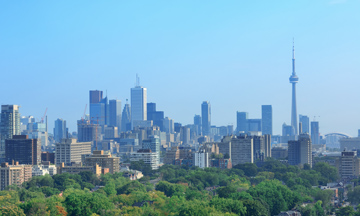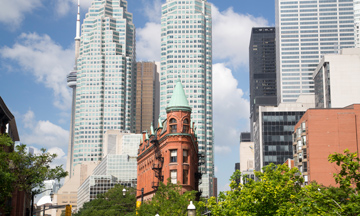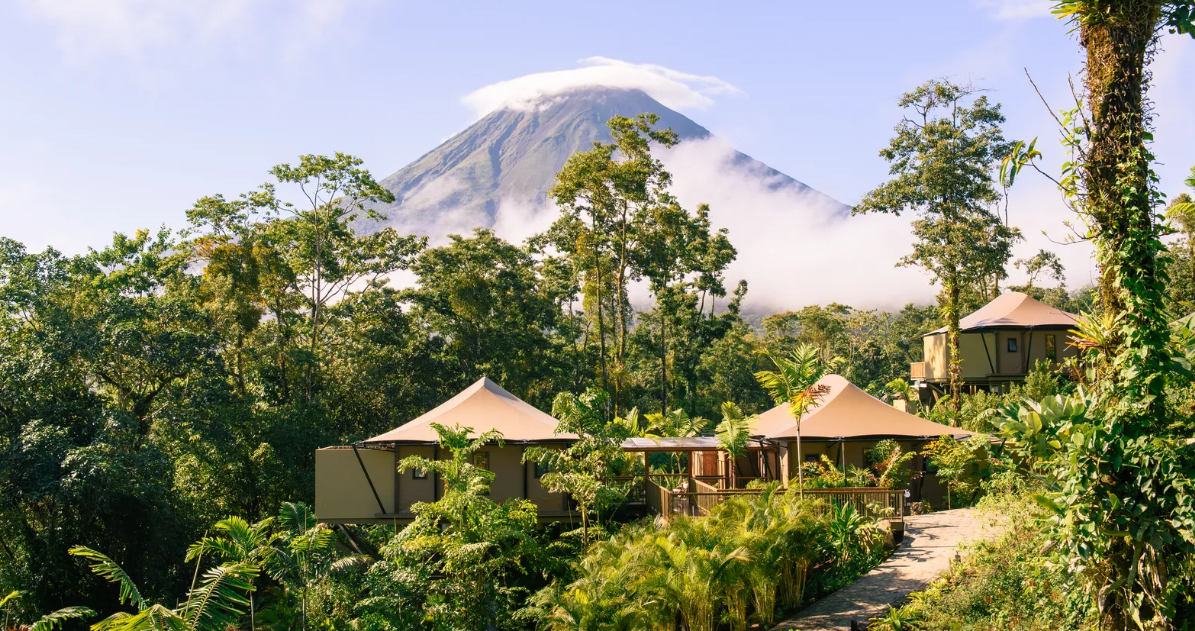
Dazzling beaches, world-class cities, and $9 healthcare—what’s not to love?
Whether you want to spend your golden years on a Caribbean beach or European village, the idea of retiring abroad sure is appealing. Foreign countries can sometimes offer cheaper housing, better healthcare, and excellent tax incentives—not to mention those aforementioned beaches. But how should you decide where to settle down? We suggest you check out the 2022 Retirement Index from International Living, an annual list of destinations where a retired couple can live comfortably on as little as $2,000 a month.
Now in its 31st year, the Retirement Index pulls information from hundreds of on-the-ground editors and correspondents around the world. Along with the editors’ personal accounts, the countries are quantified across 10 categories: Housing, Benefits & Discounts, Visas & Residence, Fitting In/Entertainment, Development, Climate, Healthcare, Governance, Opportunity, and Cost of Living. The goal is to find locations where retirees can spend less money, live happily and healthily, and experience a new country without straying too far from all that is familiar.
The top 10 countries for 2022 are a mix of cultural hubs in Europe and outdoor havens in Central and South America (we might not want until retirement to consider to these spots ourselves). Without further ado, here are the best places to retire, around the world.
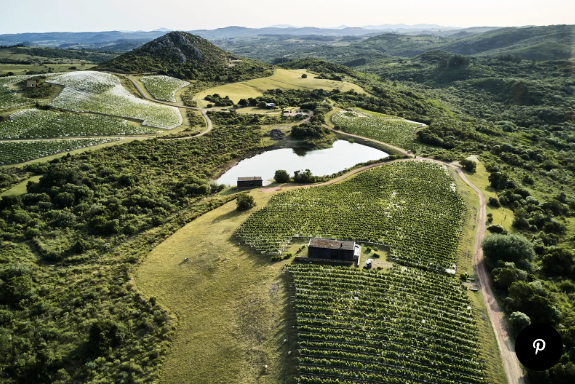
10. Uruguay
Uruguay is relaxed, easy to navigate, and offers a great mix of vibrant cities and natural beauty—in other words, it’s an excellent place to retire. You can find beaches on the coast and cattle farms on the interior, with temperatures rarely (if ever) dipping below freezing across the entire country. The capital city of Montevideo boasts excellent parks and public squares, trendy cafés, and tons of bars and restaurants along the Rambla, a waterfront walkway stretching 13 miles.
If you’re looking to settle down in a beach town, you’ll find a thriving expat community in the resort town of Punta del Este. You can work with English-speaking relocation specialists in both Punta del Esta and Montevideo, who will walk you through the visa process, help you sign up for healthcare, and open a bank account. But the best part about retiring in Uruguay? Your social security and pension will not be taxed.
Cost of living: While the cost of living in Uruguay is not as low as it was 15 years ago, you can still get a lot for a little here if you’re coming from the States. A two-bedroom apartment in Montevideo averages around $650 per month, with HOA fees and utilities adding on a couple hundred bucks. An expat couple can live extremely comfortably for $3,000 a month, which factors in healthcare, transportation, groceries, and entertainment.
Healthcare: Uruguay offers an affordable private hospital membership plan called a mutualista, which is an excellent option for residents and long-term expats. Once you apply to a hospital’s plan and get accepted, you pay a monthly fee (typically around $50-60) in exchange for routine appointments, emergency room visits, and surgeries, plus discounts on medication.
Visa requirements: To become a legal resident, you need to pass a criminal background check and have a monthly pension of around $1,500. You must first enter Uruguay on a tourist visa, then apply for residency in person at the national immigration office in Montevideo. It can take up to a year for the completed residency application to be processed, but you don’t have to wait for approval before you can get a driver’s license, open a bank account, or purchase real estate.

9. Spain
It’s never too late to improve your quality of life, and that’s pretty much a guarantee if you retire in Spain. The country offers a wonderful climate, high mental and physical wellbeing among citizens, and a way of life that values good food and leisure (hello, siestas). Towns along the Mediterranean coast offer 300-plus days of annual sunshine, ensuring you won’t have to spend your retirement years shoveling snow or waiting out the cold indoors.
Aside from great food and great weather, Spain also has plenty of cultural offerings. You truly can’t beat the architecture in Barcelona, the shopping in Madrid, the museums in Valencia, and the flamenco shows in Andalusia. Add to that some great healthcare, dependable infrastructure, and abundance of English speakers, and you have yourself an extremely comfortable retirement destination.
Cost of living: The cost of living in Spain is less than most expect. A couple can live very well on the coast for between $2,200 to $2,400 per month. That number goes up in Madrid and Barcelona, but down in smaller regional towns.
Healthcare: Expats are required to carry private health insurance for the first five years of residency. You have dozens of options to choose from, but you can expect rates around $136 per month for a healthy person in their early 60s—and that covers everything with no deductible or co-pay, including lab work and dental.
Visa requirements: The visado residencia (residence visa) is the most common option for retirees. Applicants must have an annual income of at least $29,027 and submit a good deal of paperwork, all of which can be found on the Ministry of Foreign Affairs’s website. Another option is to apply for a Golden Visa, which requires a real estate investment of €500,000 (about $567,817).

8. Malta
About 50 miles south of Sicily, Malta is the tenth smallest country in the entire world—but don’t let its lack of square milage deter you. The archipelago nation compares to the best of other countries: the beaches and ancient cities of Italy, the aromatic spices and seafood-focused cuisine of North Africa, the language and tea culture of England. It’s no wonder that 15 percent of the residents here are expats.
Much of the population is packed in the capital city of Valletta, which is a two-hour flight from most European capitals. The city is filled with museums and delicious tapas restaurants, with snorkeling spots, hiking trails, and ruins older than Stonehenge just a quick car or ferry ride away. The gloriously warm climate, abundance of activities, and aforementioned English-speaking locals make Malta a great place for retirees.
Cost of living: Malta is by no means the cheapest country in Europe, but it still offers lower prices than the U.S. and Canada. Modern, one-bedroom apartments in Valletta can reach up to $1,600 per month, but you can find options as low as $800 in smaller fishing villages. Factoring in rent, utilities, groceries, healthcare, and transportation, you can expect to spend around $2,330 per month here.
Healthcare: Unfortunately, expats cannot access Malta’s excellent public healthcare system, but the private insurance options are high-quality and inexpensive (some Maltese citizens even opt for private insurance over the free public healthcare). Premiums range from around $50-300 per month, but out-of-pocket costs are quite low—around $20 for a basic visit and $65 for a specialist, and medications at a fraction of what they cost in the U.S.
Visa requirements: The Malta permanent residence visa is the best option for non-EU nationals. To qualify, you must earn an annual income of at least $25,263, open a Maltese bank account, and either purchase a house worth at least $329,514 or pay $10,984 in annual rent. Residency permit applications can only be submitted in person at the Department for Citizenship and Expatriates Affairs in Valletta.

7. France
You’ve probably dreamt of living in France at some point in your life, and retirement is as good an opportunity as any. There is captivating culture and nature at every turn, from the glitzy beach towns of the Côte d’Azur to the sunflower fields of the Dordogne. And while living in the center of Paris may not be a cost-efficient option, there are surprisingly affordable (and just as charming) locations elsewhere in the country.
Montpellier is the fastest-growing metropolitan area in France, with tons of theaters, restaurants, and modern apartments starting at $160,000. The southern city is also about a 30-minute shuttle ride away from the Mediterranean Sea. There’s also something to be said for settling down in one of the country’s many charming small towns, like hilltop Rocamadour or canal-lined Colmar.
Cost of living: If you avoid the Cote d’Azur and center of Paris, you can often buy or rent French properties for 50 percent less than comparable homes in the U.S. If you can rent an apartment for $1,200, your monthly budget can easily be capped at $2,500.
Healthcare: France’s healthcare system is currently ranked number one by the World Health Organization. Care is modern and reliable, and the costs are fixed by the government and cannot be increased by providers. You can enroll in the system after three months of residence (the cost is 8 percent of your income), and you can expect to pay about $9 out of pocket for a standard doctor’s visit.
Visa requirements: You can apply for a long-term visa at the nearest French consulate in your home country, after which you obtain a carte de séjour visiteur (a residence visa). Your pension must be at least €870 (about $988) as a single or €1,350 (about $1,533) as a couple, and you’ll need to renew your visa every year.

6. Ecuador
Ecuador offers a perfect combination of climate, culture, and affordability—and because it’s not as overrun with expats as some other South American countries, you can really experience the local culture pretty much anywhere you go. It still has the makings of a comfortable retired life, however, with high-speed internet, good transportation, and the American dollar as currency.
Depending on where you go in Ecuador, you can eat freshly made ceviche on the beach, zipline through the Andes, raft through the Amazon rainforest, or enjoy 16th-century architecture in Quito. There are sizable expat communities in both the coastal city of Salinas and the Andean resort town of Cuenca.
Cost of living: Housing is extremely affordable in Ecuador. You can buy a beach house for around $150,000, or rent a two-bedroom condo in downtown Cuenca for $500 a month. A couple can enjoy a comfortable—even pampered—lifestyle for around $1,800 per month.
Healthcare: A 60-year-old resident can expect to pay a monthly premium of around $70 for excellent private insurance. You can also opt into Ecuador’s national social security healthcare system for a monthly fee equal to 17.6 percent of your income. Visits to a general practitioner start around $20, specialists start at $40, and dental cleanings start at $30.
Visa requirements: The most popular option for retirees is the 60-III Pensioner’s program, available to U.S. citizens 65 years and older. The main requirement is a monthly pension of $800, and the visa is good for two years before needing to be renewed. You can find the application online, which can be notarized and translated at an Ecuador consulate.
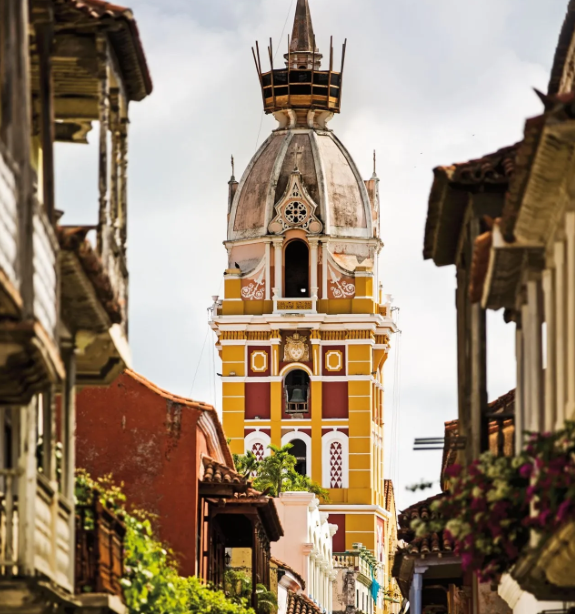
5. Colombia
Colombia is one of the world’s most biodiverse countries, encompassing beaches, the Amazon, and the Andes within its borders. In other words? Pretty much anyone can find a comfortable place to call home here. The country also welcomes non-stop flights from the U.S. into all its major cities, with flights from Florida clocking in at under three hours.
Though Colombia has many excellent cities, Medellín has a particularly thriving expat community, thanks in large part to the city’s reliably moderate climate. Meanwhile, the small town of San Antonio de Pereira (about 45 minutes outside of Medellín) has less traffic and a slower lifestyle for an even more idyllic retirement situation.
Cost of living: If you want to live in an upscale neighborhood of Medellín and Bogotá, you can expect to pay around $1,250 per month for a very nice three-bedroom apartment. Venture out of the city centers for rent as low as $500. Depending on where in the country you look, you can live comfortably for about $2,700 per month (including rent).
Healthcare: Colombia’s public healthcare plan is called Entidades Promotoras de Salud (EPS), which costs about 12.5 percent of your pension income. You can then add private plans onto EPS for extra coverage and perks like private hospital rooms; copays for pretty much any type of doctor’s visit typically cost between $4-10.
Visa requirements: To qualify for a Colombian M-11 visa (the retirement visa), your income must exceed three times the minimum wage in Colombia—in 2022, that equals $764 per month. You can apply for the visa online, though you must pick it up in person at the Ministerio de Relaciones Exteriores office in Bogotá.

4. Portugal
Whether you prefer rugged Atlantic beaches or cobblestoned cities, Portugal has something for everyone. The European country benefits from a glorious Mediterranean climate, with local seafood, olive oil, and wine to match. Residents get to enjoy a laid-back environment with all the first-world amenities, like high-speed internet and reliable airports and public transportation.
Cities like Lisbon and Porto are cultural hot spots, with enough museums, concert halls, and trendy cafes to last a lifetime. But there are tons of other charming towns and natural wonderlands a quick train ride away—think the vineyards of the Douro Valley, the rocky beaches of the Algarve, and the large English-speaking expat community of Cascais.
Cost of living: Portugal is one of Western Europe’s most affordable countries. A couple can live comfortably in Lisbon’s residential neighborhoods from about $2,200 a month, while a budget of $1,700 a month can suffice in one of the country’s smaller or more interior cities.
Healthcare: Once you obtain your Portuguese ID number and residence permit, you can access the state medical system—copays under this system are extremely low, usually no more than $10 per visit. You can also opt for private insurance, which costs between $5 to 46 per month.
Visa requirements: One of the most popular options for retirees is the Golden Visa, which was introduced in 2012 to attract foreign nationals. To qualify, you must be 18 years old with a clean criminal history, and you must invest in a Portugal property of $603,865 or more. Another option is to apply for a 120-day stay visa, which requires a monthly income of $1,070; you can then apply for two-year permits successively, then apply for permanent residency after five years.

3. Mexico
Mexico is a convenient choice for American retirees, but the country offers far more perks than its geographic proximity. You can easily find high-speed internet and cell service, good highways, reliable electricity, and familiar stores and restaurants alongside local gems. And thanks to a huge expat community (more than one million Americans live there at least part of the year), you don’t have to be fluent in Spanish to get around easily.
Despite all the familiarity, Mexico still has incredible landscapes and a distinct culture that makes it a fun place to call home. You can learn all about the local holidays and traditions, then visit one of the country’s many beach towns to while away your afternoons along white sands and turquoise waters.
Cost of living: A furnished, two-bedroom home in a more expensive region (like Mexico City or Los Cabos) costs about $750 per month, with utilities rarely inching above $30 each. All in all, you can live on around $1,890 a month, which includes rent, utilities, food, entertainment, healthcare, and transportation.
Healthcare: Unemployed residents can enroll in the Instituto Mexicano de Seguro Social (IMSS) healthcare system, which costs about $45 per month for someone in their 60s. But many people choose to pay out of pocket, with typical visits ranging from $15-40.
Visa requirements: To qualify for a permanent residence visa, you must earn a monthly pension of at least $2,300. You can apply at your nearest Mexican consulate.
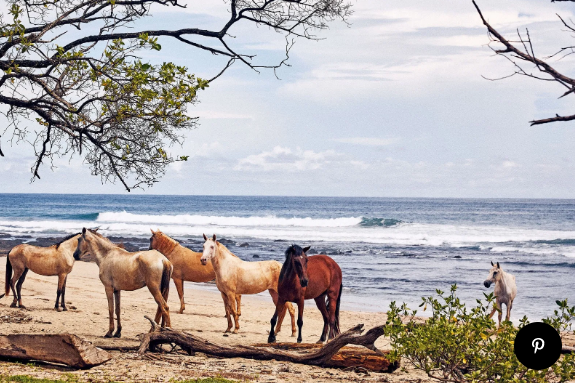
2. Costa Rica
The natural beauty of Costa Rica is no secret, with beaches, cloud forests, and coffee plantations filling its relatively small area. The country has been extremely popular with expats for the past 40 years, so you can easily find established communities of English-speaking peers (though you should definitely learn Spanish if you’re considering a permanent move).
Costa Rica’s famous pura vida lifestyle encourages people to relax, get outdoors, and stop sweating the small stuff. It’s easy to get back to the fast pace in the States, however, with numerous airlines flying out of the international airports in San José (SJO) and Guanacaste (LIR).
Cost of living: A single person can live on between $1,600 and $2,000 a month in the Central Valley (home to pricier cities like San José and Tamarindo), while retired couples live extremely well on $2,500 to $3,000 a month. That includes all costs: housing, transportation, medical care, utilities, food, and entertainment.
Healthcare: Once you become a resident, you can either pay monthly into the universal medicine program (typically 7 to 11 percent of your income) or get a private policy. You can also pay out of pocket, with visits costing around $50 for a regular doctor’s visit and $80 for a specialist.
Visa requirements: There is no age requirement for the Pensioner Visa, but you must have a monthly pension of $1,000. You must apply in person at the Immigration Office of Costa Rica in San José.

1. Panama
This is the 11th year that Panama has earned the top spot on the Retirement Index, and it’s easy to see why. The country is perfectly perched between North and South America, just a three-hour flight away from Miami. It offers both Pacific and Caribbean beaches, and coastal towns like Coronado have established expat communities that are thriving and welcoming.
The Panama Pensionado (or Panama Retirement) visa is one of the most attractive in the world, offering steep discounts on everything from airfare to theater performances. The expat communities here aren’t quite as established as in Costa Rica, which isn’t necessarily a bad thing—you can still find thousands of fellow expats, and they tend to live among the locals as opposed to separate enclaves.
Cost of living: A retired couple can live very well in Panama City for less than $3,000 a month, (including rent), while a single person could retire pretty much anywhere in Panama for $1,700 a month.
Healthcare: There are many excellent hospitals and clinics around the country (like Johns Hopkins International-affiliated Hospital Punta Pacifica), and all legal residents are entitled to 20 percent off prescription medications if they’re of pensioner age—55 years for women, 60 for men.
Visa requirements: You must be 18 years old, have a minimum monthly pension of $1,000, and apply in person through a Panamanian attorney. You can find full details on the Embassy of Panama website.
By CN Traveler March 15, 2022

